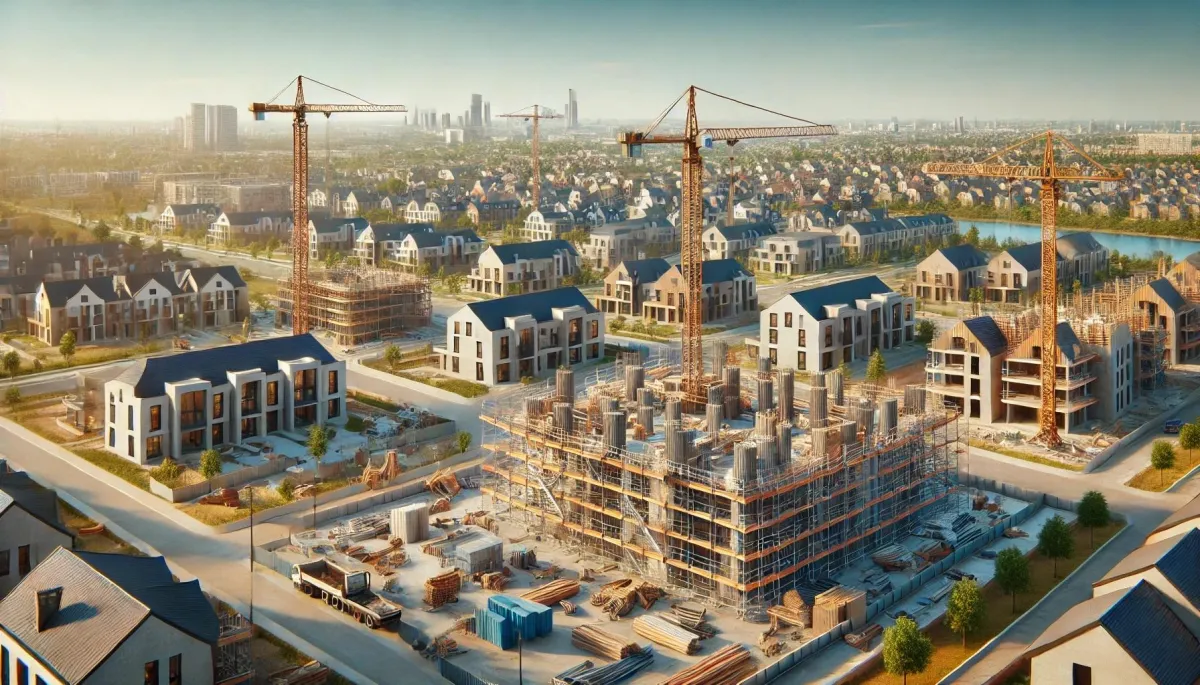
Navigating Builder Financing: Current Credit Conditions and Interest Rate Trends
The residential construction industry has faced significant financial challenges in recent years, marked by tightened credit conditions and fluctuating interest rates. However, recent developments indicate a shift that could impact builders and developers.
Persistent Tightening of Credit for Builders
For eleven consecutive quarters, credit for residential Land Acquisition, Development, and Construction (AD&C) has tightened. In the third quarter of 2024, the National Association of Home Builders (NAHB) reported a net easing index of -12.0, signifying continued tightening, though less severe than in previous quarters. Similarly, the Federal Reserve's survey of senior loan officers reflected a net easing index of -14.8, corroborating these findings.
Builders and developers have reported several methods by which lenders have tightened credit:
Lowering Loan-to-Value Ratios: 61% of respondents noted reductions in the loan-to-value or loan-to-cost ratios.
Requiring Additional Collateral: Another 61% indicated that lenders demanded personal guarantees or collateral unrelated to the project.
Reducing Loan Amounts: 56% experienced lenders decreasing the amounts they were willing to lend.
Relief from Elevated Interest Rates
Amidst these stringent credit conditions, there has been a positive development regarding interest rates. In the third quarter of 2024, contract interest rates for all categories of AD&C loans decreased:
Land Acquisition Loans: Rates fell from 9.28% to 8.50%.
Land Development Loans: A decline from 9.05% to 8.83% was observed.
Speculative Single-Family Construction Loans: Rates dropped from 8.98% to 8.54%.
Pre-Sold Single-Family Construction Loans: A decrease from 8.55% to 8.11% was reported.
This reduction in interest rates offers some respite to builders, potentially easing the financial burden associated with new projects.
Implications for the Housing Market
The combination of persistent credit tightening and recent interest rate relief presents a complex landscape for the housing market. While lower interest rates can stimulate construction activity by reducing borrowing costs, the ongoing stringent credit conditions may continue to pose challenges for builders seeking financing.
Industry stakeholders should monitor these trends closely, as they have significant implications for project planning and financial management. Engaging with financial advisors and staying informed about policy changes can help builders navigate this evolving environment.
This will impact consumers in several ways:
1. Potential for Increased Housing Costs
Limited Supply: Builders facing tighter credit may struggle to finance new projects, slowing the pace of new housing development. This could exacerbate the ongoing housing shortage and lead to higher prices for homes due to constrained supply.
Delayed Projects: Consumers looking for new construction homes might experience delays as builders navigate financing challenges.
2. Lower Borrowing Costs for Mortgages
Easing Interest Rates: While the focus of the article is on construction loans, falling interest rates could extend to mortgage products, potentially making it cheaper for consumers to finance home purchases. Lower rates might stimulate demand, further pushing up home prices.
3. Fewer Options for Affordable Housing
Focus on High-End Projects: Builders may prioritize higher-margin projects to mitigate risks associated with tight credit, leaving fewer options in the affordable housing segment. This can make it harder for first-time buyers and low-to-moderate-income families to find suitable homes.
4. Stricter Lending Standards for Buyers
Tougher Loan Approvals: If lenders maintain strict credit conditions across the board, buyers may face more stringent requirements to qualify for mortgages. This could limit access to homeownership for some consumers.
5. Increased Costs Passed to Buyers
Higher Financing Costs: Builders may pass on increased costs related to tighter credit to buyers in the form of higher home prices, especially in speculative or custom home construction.
Key Takeaways for Consumers:
Plan for Price Changes: Prospective buyers should be prepared for potential increases in home prices and factor this into their budget planning.
Explore Mortgage Opportunities: With easing interest rates, buyers may want to act quickly to lock in favorable mortgage rates before rates fluctuate.
Advocate for Affordable Housing: Community involvement and advocacy for policies supporting affordable housing can help mitigate the impact of these trends on vulnerable groups.
By staying informed and proactive, consumers can better navigate these changes and make strategic decisions regarding homeownership.
Conclusion
The residential construction sector is experiencing a nuanced financial climate, characterized by sustained credit tightening alongside easing interest rates. Builders and developers must remain vigilant and adaptable, leveraging the benefits of lower interest rates while strategizing to overcome the hurdles posed by restricted credit access.
Looking to navigate the evolving housing market or secure the perfect property? Sancastle Realty is here to guide you every step of the way. Whether you're a builder seeking financing advice or a buyer ready to find your dream home, our expert team is ready to assist. Contact us today and let’s build your future together!
Authoritative Sources:
